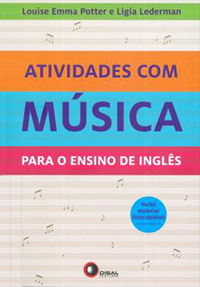By - Viviane Kirmeliene

I believe that every English teacher has, at least once during their professional life, come up with their own materials. Sometimes we do that to complement a coursebook or attend students’ specific needs. Other times, we are not happy with the materials we are supposed to use in class – or we have no materials at all. I am an advocate for teachers creating their own materials for different reasons that go from the ones mentioned above to the opportunities for professional development that writing opens up.
But what makes some teachers stand out from the crowd and become professional materials writers? How do they end up being invited by publishers to write content? As an ELT editor and materials writer myself, I can say that there isn’t a recipe to start working for publishers. However, I think sharing a few tips on things I and other materials writers have done might be helpful.
Have you designed a fantastic worksheet to review content for the final test? Created a game to practice the simple past your students have simply loved? Share your work with your peers! You can make some extra copies of the worksheet and leave them in your locker in the teacher’s room. Every teacher loves great ideas and your workmates will certainly appreciate your attitude.
But as important as sharing the content you have created is getting feedback on it, which is something most of us forget to do. You can discuss with the coworkers who have used your material the level of difficulty of the tasks, students’ reaction to the activities and how appropriate they were to the topic/structure being taught, for example. Your colleagues will definitely be able to provide valuable insight on your work – and even spot a typo you might have overseen. In my opinion, one of the most constructive questions you can ask to get feedback is “How would you change this worksheet if you were to use it again?”.
Still considering your own writing, another nice way to practice content development skills is to write down the instructions for the materials you have designed. The rules for the board game you came up with to review prepositions might be clear for you, but will a 30-second-before-the-bell-rings explanation in the staff room be enough for another teacher? I would say that writing instructions that are comprehensive, clear and concise is an art that can take people a lot of time (and rewriting) to master, so the sooner you start, the better. Surprisingly, many materials writers I know started their work with publishers writing notes for teacher’s guides – another good reason to begin developing these skills.
I have a substantial collection of coursebooks, loose worksheets and resource materials that have been gathered since I started teaching, in the 1990s. Although sometimes I feel I am a bit of an ELT book hoarder, these materials have certainly helped me to build up a repertoire of topics, lessons and activities that could be used to teach English, as well as broaden my views on how books, units and lessons can be designed and organized and on how materials have evolved over time.
Teaching experience also counts here – having worked with several series and resource materials from different publishers helped me to develop a very clear sense of what works well and of what doesn’t in different teaching settings, which is definitely a great advantage when writing content.
I have seen very few courses on materials development for ELT. The International Teacher Development Institute (iTDi) has offered some online courses for teachers who want to start writing and even publishing their own materials, so it is a good idea to keep them on your radar.
Fortunately, we can count on several books, articles and online resources on materials writing. I suggest every novice writer read the books on the ELT writer training program developed by ELT Teacher 2 Writer, beginning with How ELT Publishing Works, which provides an enlightening behind-the-scenes view of the industry. All the titles in the series are available as e-books and they are highly affordable. Another must-have is ETPedia Materials Writing – 500 ideas for creating English language materials, a thorough reference guide for teachers who want to get into materials writing or even for experienced content developers.
When it comes to online resources, the websites of ELT Teacher 2 Writer and of the IATEFL Materials Writing SIG are great information hubs, with various resources and useful links. You can also follow them on social media to keep track of news, events and blog posts.
Learning about materials writing will certainly improve the quality of the content you produce for your classes. Also, it will help you be better prepared for your first writing gig with a publisher when you get your chance.
Let people – your coordinator, DoS, the ELT sales rep who visits your school, editors – know you want to get into materials writing. Publishers are always looking for knowledgeable and experienced teachers who are eager to face new challenges and not afraid of learning. When going to ELT conferences, take some time to visit the stands and talk to people who might hire you in the future (and also to put the second tip in this article into practice). A simple piece of advice I often give teachers is to have professionally-made business cards at hand every time they attend ELT events. One of the first things I did when I decided to go freelance, back in 2012, was to hire a designer to create a unique business card for me, one that would reflect my skills and promote the professional I wanted to be. I can’t say the card has helped me to actually get hired for a writing or editing project, but I believe it has contributed to building up the professional image I had in mind.
Teachers have reached me via Facebook or LinkedIn to get advice on how to get into materials writing. You should definitely use these social networks to promote yourself and your writing work. From my experience, LinkedIn is often underrated by teachers. I have got and offered writing and editing jobs through this business-oriented social network, but also been frustrated when not finding there the profiles of teachers who have been recommended for projects. So, if you aren’t on LinkedIn or if your profile is outdated, you might be wasting valuable opportunities that were only some clicks away from you.
The area of ELT materials writing has been changing over the years, posing new challenges for writers and editors. Even if you don’t aim to work for and with publishers or even share the materials you wrote for your classes with others, I believe that every teacher should take materials writing seriously, as a way into professional development. As Jeremy Harmer states in ETPedia Materials Writing, “We all start writing our own stuff because we want to provide interesting content and activities for our students – content and activities which we really want to use. We do it because it feels great and makes us better teachers”.
I hope the tips in this article will help you become a better writer and a better teacher. Feel free to get in touch with me via e-mail (vikirme@gmail.com), on LinkedIn or Facebook.
Viviane Kirmeliene is a teacher, teacher trainer, ELT editor and materials writer. She holds a BA in English from the University of Sao Paulo and the Cambridge ICELT. As an editor and writer, she has worked in several projects for publishers in Brazil and abroad. She is one of the main authors of Stopwatch, a series for lower and upper secondary students, published by Richmond, and Circles, a series for students in Ensino Médio in Brazilian public schools, published by FTD Educação. She has also co-authored Brick by Brick, a series for primary students published by StandFor.
LIVRO RECOMENDADO
